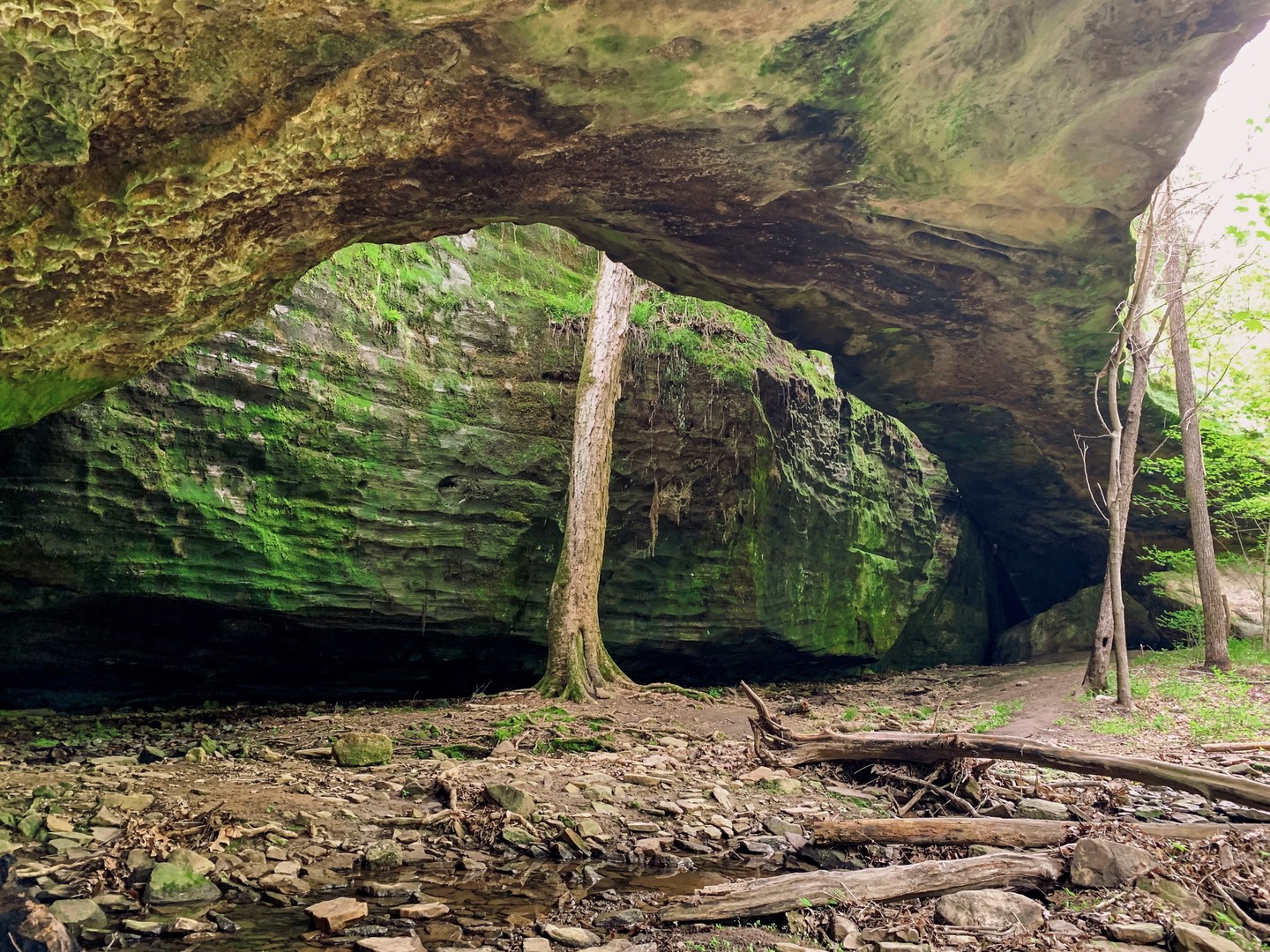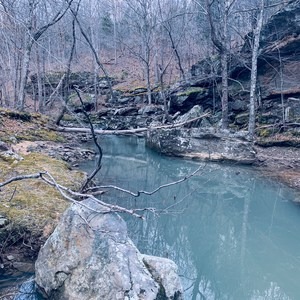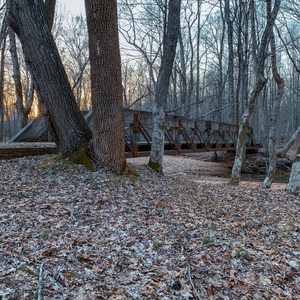You are here
Just as its name implies, the centerpiece of The Nature Conservancy's Mantle Rock Nature Preserve is a 30-foot natural sandstone bridge spanning 188 feet and embellished by bluffs, shelters, honeycomb formations, fluorite deposits, and a rock-lined stream. The nature preserve also contains extraordinary biological diversity, with spectacular spring wildflowers and an upland forest interspersed with the best example of rare and fragile sandstone glades in all of Kentucky.
History also makes its mark at Mantle Rock. The nature preserve is a certified site on the Trail of Tears National Historic Trail, which the Cherokee followed after being forced to give up their lands east of the Mississippi River and migrate to an area in present-day Oklahoma. During the harsh winter of 1838 to 1839, approximately 1,766 Cherokee from the Peter Hildebrand Detachment spent about two weeks in the Mantle Rock area while waiting for the Ohio River to thaw and become passable. Many Cherokee return each year to pay homage to their ancestors.
The trail to Mantle Rock is an easy hike through hardwood forest. From the parking lot to Mantle Rock, the trail slopes downhill. The trail is dirt and can be obscured by fallen leaves, so it is best to follow the green trail markers. You will then come to a "T" in the trail; go left and you will begin to decend into a hollow with a small stream. Shortly thereafter, a bluff comes into view, and you reach the gem of this trail. If you wish to continue on around the loop of the preserve, you will encounter small slot canyons, sheer bluff walls, and even a spring-fed waterfall named Joy Falls, a 20-foot free-falling waterfall and swimming hole that also has a shelter cave behind it.
Return back to where you started after the 2.3-mile hike, and make sure on your way out of the area to drive 5 miles to nearby Berry's Ferry, where the Cherokee and other Native Americans crossed on their way to reservations in Oklahoma. Snakes are common in spring and summer. Copperhead or timber rattlesnakes are the only venomous species you would likely encounter. Ticks and mosquitos are also a nuisance in the summer.
Logistics + Planning
Current Weather: Powered by Dark Sky



























Comments
Sign In and share them.